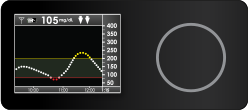4 Innovative Devices Helping Diabetic Individuals

Diabetic patients are accustomed to carting around a lot of stuff – test strips, meters, and so forth. But pocket-sized devices are streamlining all that gear (big thanks to technological innovation). The days of those Autolet lancing devices and hard needle shots are gradually coming to an end.
The innovations occurred within a broader context of sophisticated technologies, which help accelerate the pace of R&D. Integration with cloud-platforms, big data software and mobile apps are some of the most exciting trends in diabetic care devices.
If you’re considering investing in the latest advances to manage your condition, here are 4 innovative devices you need to learn about:
- Glucose monitoring device
The continuous glucose monitor is an important medical advancement that includes sensor geometry, algorithm and membrane technology. With these innovations, diabetic patients can reduce the frustrations and guesswork that come with decision making based on numbers. Knowing their blood glucose levels in real time, as well as the speed and direction it takes, enables them to make informed and confident decisions about their condition.
With advanced CGM devices, individuals can take advantage of the sensor that measures glucose levels just below the skin. The latest devices include a transmitter that’s fastened on the sensor’s top and transmits data wirelessly to the receiving display. The display shows blood glucose levels in vibrant colors so users can easily see when it’s low, high or within range.
- Smart Glucagon device
Glucagon devices are speeding up the process of the delivery of lifesaving glucagon, and are minimizing complexity. Users with conventional kits have to use a syringe to inject liquid into a vial of powder, and share it until the liquid is clear, before withdrawing the liquid to inject inside their body.
But latest devices like glucagon pen removes complex instructions and make the process easier to implement. For example, Biodel’s offering is a pen. The body of this pen can be twisted to mix the liquid inside with the powder. The user then has to remove the needle shield, inject, and deliver the dose with the plunger. A highlight is that after the delivery of glucagon, the needle retracts automatically.
- Mobile diabetic coach
Variety of companies now offer a diabetic app that includes coaching. They’re different from the usual diabetic apps because the aim is to provide 24/7 advice to the user. The latest apps should also comply with the federal privacy rules, and the advice given should be based on the safety and effectiveness demonstrated in clinical trial.
With a real-time, virtual coach by your side, you can check blood glucose, eat, exercise, and take medications at just the right time. You’ll also receive tailored instructions on how to keep your blood sugar in the normal range on your smartphone. Additionally, advanced coaching apps provide an aggregate result at the end of the week/month that can also be used by the physician.
- Sleek insulin pump
This device was created for type 2 diabetic patients who want to use insulin, but avoid the option by the thought of taking multiple injections each day. Small pumps from companies like PaQ can hold 330 units of insulin (fast-acting).
These devices have multiple basal rates and can be worn in water as well. Additionally, they enable push button delivery. The dose is delivered in a record time, and there’s no need of multiple injection doses each day.

